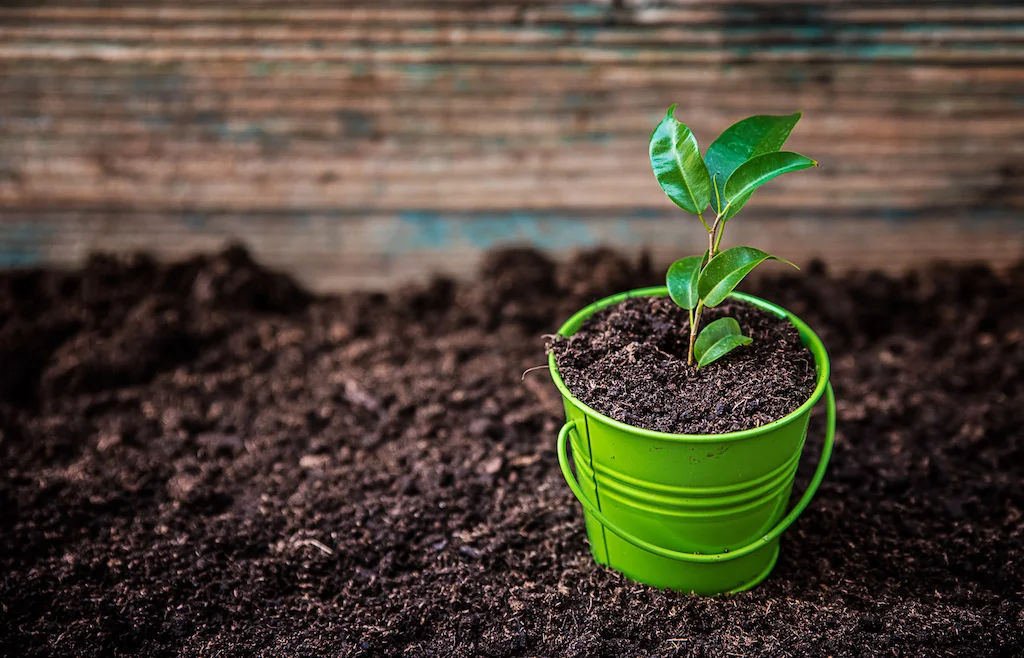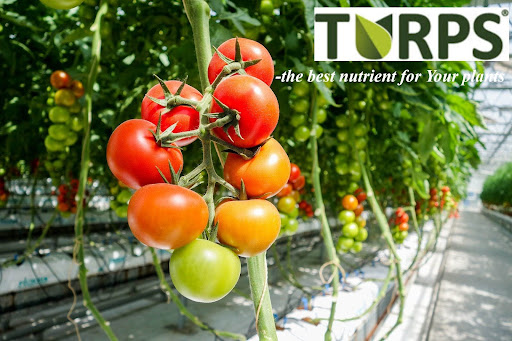What are soil improvers?
Soil improvers, also known as soil amendments, are materials added to soil to enhance its physical properties, fertility, and overall health.
They play a crucial role in sustainable agriculture and gardening by improving soil structure, increasing nutrient availability, and promoting beneficial microbial activity.
What Are Soil Improvers and How Do They Work?
Soil improvers, often called soil amendments, are materials added to the soil to enhance its physical properties, fertility, and overall health. Whether you’re a commercial farmer or a home gardener, soil improvers are essential tools that help create the ideal environment for plants to thrive. But not all soil improvers are created equal. They come in different forms and serve various functions, depending on your soil’s needs.
Types of Soil Improvers
Organic Amendments
Organic soil improvers are derived from natural, decomposed plant or animal materials. Common examples include compost, manure, peat, and leaf mold. These amendments are rich in organic matter, which not only enhances soil fertility but also improves its structure. For example, compost introduces valuable nutrients and beneficial microorganisms into the soil, creating a healthy, living environment that supports plant growth.
Manure adds nitrogen, phosphorus, and potassium, essential nutrients for robust plant development. Peat, on the other hand, is excellent for improving soil texture and water retention, making it especially useful in sandy soils that drain too quickly. By enriching the soil with organic matter, these amendments improve aeration, water retention, and nutrient availability—all of which contribute to healthier, more productive plants.
Inorganic Amendments
Inorganic soil improvers are mineral-based materials used to modify soil texture and physical properties. Sand, perlite, vermiculite, and lime are some of the most commonly used inorganic amendments. Sand is often added to heavy clay soils to improve drainage and aeration, while perlite and vermiculite help loosen compacted soils, allowing for better root growth.
Lime is used to raise soil pH, making acidic soils more hospitable to a wider variety of plants. Though they don’t add nutrients like organic amendments, inorganic soil improvers play a critical role in optimizing the soil’s physical environment, ensuring plants have the right conditions to thrive.
How Soil Improvers Work
Soil improvers function through several mechanisms to enhance soil quality and promote healthy plant growth. Here’s how they make a difference:
Enhancing Soil Structure
A well-structured soil is key to healthy plant growth. Soil improvers, particularly organic amendments, promote the aggregation of soil particles, creating a crumb-like structure that improves aeration and water infiltration. This is especially beneficial in compacted or heavy clay soils, where poor structure can limit root growth and water movement. For instance, applying compost or manure can transform dense, compacted soil into a loose, friable medium that supports healthy root systems. Research shows that organic amendments reduce moisture loss through evaporation and runoff, inhibit weed growth, and increase soil organic matter—all of which contribute to improved soil health. (PMC.NCBI.NLM.NIH.GOV)
Increasing Nutrient Availability
One of the most important functions of soil improvers is to enhance the availability of nutrients to plants. Certain soil improvers, especially those rich in humic substances like humic and fulvic acids, chelate essential nutrients—binding with elements such as iron, magnesium, and calcium to make them more accessible to plant roots. This chelation process is particularly valuable in soils with high pH levels, where nutrients can become insoluble and unavailable to plants. By keeping these nutrients soluble, soil improvers ensure that plants receive the nourishment they need for healthy growth. The result is stronger, more resilient plants with improved yields.
Stimulating Microbial Activity
A healthy soil isn’t just dirt—it’s a living ecosystem teeming with microorganisms that play a vital role in nutrient cycling and organic matter decomposition. Organic soil improvers provide a rich food source for these beneficial microbes, fostering a thriving microbial community. These microbes break down organic material into nutrients that plants can absorb, improving soil fertility over time. In addition to supporting plant health, increased microbial activity also helps build soil structure, retain moisture, and suppress soil-borne diseases. Think of it as creating a self-sustaining, living system beneath the surface.
Improving Water Retention
Water is essential for plant growth, but not all soils retain moisture effectively. Soil improvers can significantly enhance a soil’s ability to hold onto water, reducing the need for frequent irrigation. This is particularly important in sandy soils, which drain quickly, and in regions with low rainfall or frequent droughts. Organic amendments like compost and peat increase the soil’s water-holding capacity by improving its structure and adding organic matter, which acts like a sponge to retain moisture. By maintaining optimal hydration levels, soil improvers help plants stay healthy and resilient, even in challenging conditions.
TURPS: A New Generation Soil Improver
TURPS is an innovative organic humate fertilizer and soil improver developed through a patented process that utilizes peat and other natural materials. It’s designed to accelerate plant root development, leading to faster flowering and fruiting, with reported yield increases of 20–40%. But TURPS doesn’t just boost plant growth—it also improves soil fertility by enriching it with active organic substances, enhancing soil structure, and increasing nutrient content.
What sets TURPS apart is its commitment to environmental sustainability. The production and use of TURPS generate no waste, exemplifying the principles of the circular economy. This makes TURPS not only an effective soil improver but also a responsible choice for farmers and gardeners who care about the planet.
Soil improvers are essential tools in modern agriculture and horticulture, offering numerous benefits that enhance soil health and plant productivity. By understanding how they work—from improving soil structure and nutrient availability to stimulating microbial activity and enhancing water retention—you can make informed decisions to support healthy, thriving plants.
Products like TURPS demonstrate how innovative soil improvers can deliver exceptional results while supporting sustainable, eco-friendly farming practices. Whether you’re growing vegetables in your backyard or managing a large agricultural operation, soil improvers are the key to unlocking your soil’s full potential.
What are soil improvers?
Soil improvers, also known as soil amendments, are materials added to soil to enhance its physical properties, fertility, and overall health. They help improve soil structure, increase nutrient availability, and promote beneficial microbial activity, making them essential tools for sustainable agriculture and gardening.
Why are soil improvers important for plant growth?
Soil improvers create an optimal environment for plants by enhancing soil structure, increasing nutrient availability, improving water retention, and fostering microbial activity. These factors contribute to healthier, more resilient plants with better yields.
What are the different types of soil improvers?
-
Organic Amendments: Derived from decomposed plant or animal materials, such as compost, manure, peat, and leaf mold. They enrich the soil with organic matter, improve fertility, and enhance soil structure.
-
Inorganic Amendments: Mineral-based materials like sand, perlite, vermiculite, and lime. These are used to modify soil texture, improve drainage, and adjust soil pH, though they don’t add nutrients like organic amendments.
How do organic soil improvers work?
Organic soil improvers improve soil health by adding nutrients and organic matter. For example, compost introduces beneficial microorganisms and nutrients, while manure adds nitrogen, phosphorus, and potassium. Peat improves soil texture and water retention, especially in sandy soils.
What role do inorganic soil improvers play?
Inorganic soil improvers are used to adjust the physical properties of the soil. Sand improves drainage in heavy clay soils, perlite and vermiculite loosen compacted soils, and lime raises the pH of acidic soils, making them more suitable for a wider range of plants.
How do soil improvers enhance soil structure?
Soil improvers, particularly organic amendments, promote the aggregation of soil particles, creating a crumb-like structure. This improves aeration and water infiltration, making it easier for roots to grow and access nutrients. This is especially helpful in compacted or heavy clay soils.
Can soil improvers increase nutrient availability?
Yes! Soil improvers rich in humic substances, such as humic and fulvic acids, chelate essential nutrients like iron, magnesium, and calcium, making them more accessible to plant roots. This ensures plants receive the nourishment they need for healthy growth and better yields.
Do soil improvers affect soil microorganisms?
Absolutely. Organic soil improvers provide a food source for beneficial soil microbes, fostering a thriving microbial community. These microbes play a crucial role in nutrient cycling and organic matter decomposition, further enhancing soil fertility and supporting plant health.
How do soil improvers help with water retention?
Soil improvers enhance the soil’s ability to retain moisture, reducing the need for frequent irrigation. Organic amendments like compost and peat act like sponges, increasing water-holding capacity and helping plants stay hydrated, even in dry or sandy soils.
What is TURPS, and how does it work as a soil improver?
TURPS is an innovative organic humate fertilizer and soil improver developed through a patented process using peat and other natural materials. It accelerates plant root development, leading to faster flowering and fruiting with yield increases of 20–40%. TURPS also improves soil fertility, enhances soil structure, and increases nutrient content.
What makes TURPS environmentally sustainable?
The production and use of TURPS generate no waste, aligning with circular economy principles. This commitment to sustainability makes TURPS a responsible choice for farmers and gardeners who care about the environment.
Your Ultimate Guide to Soil Improvers
Curious about how to give your plants the best possible environment to grow? Soil improvers, also known as soil amendments, are the secret ingredient to healthier, more productive gardens and farms.
Whether you’re tackling compacted soil, struggling with poor nutrient availability, or just want to boost your crop yields, this FAQ will walk you through everything you need to know. From understanding different types of soil improvers to discovering how products like TURPS can revolutionize your soil health, we’ve got you covered.

TURPS is a versatile organic soil enhancer that significantly improves soil structure, fertility, and water retention. It is especially beneficial for various agricultural and horticultural applications.
How to use
Fruit Trees and Shrubs
Improving Crop Yields
Urban Gardening
Turf and Landscaping
Sustainable Farming
Science
Yield Growth
Improved Soil Structure
Root Development
Better Resistance
Soil Fertility Improvement
Contact Us
TURPS Organic Ltd
Pärtsaare, Estonia
info@turpsorganic.com
Mon-Fri 09.00 a.m-05.00 p.m
TURPS is suitable for use in organic production in accordance with the
requirements of Commission Regulations (EC) No 834/2007 and 889/2008
© All right reserved by TURPSORGANIC
Privacy policy


